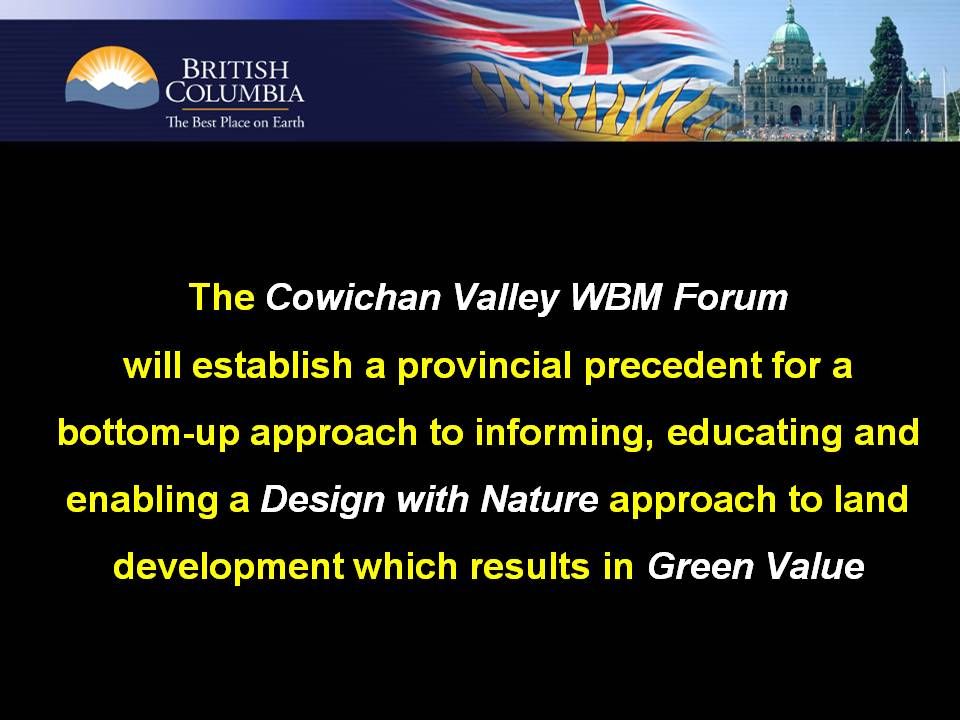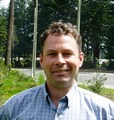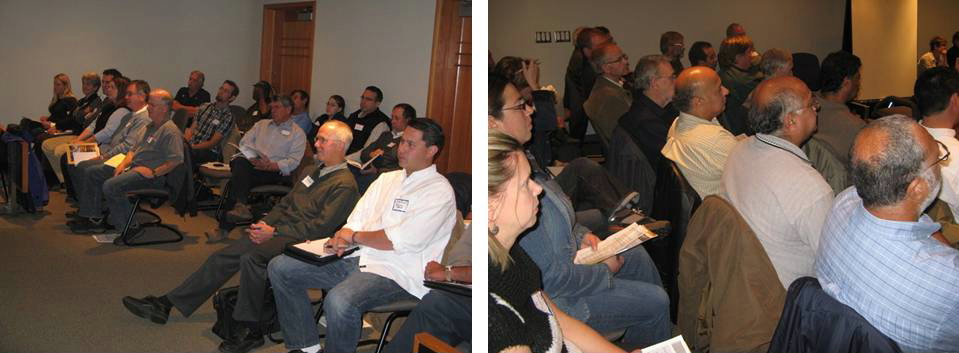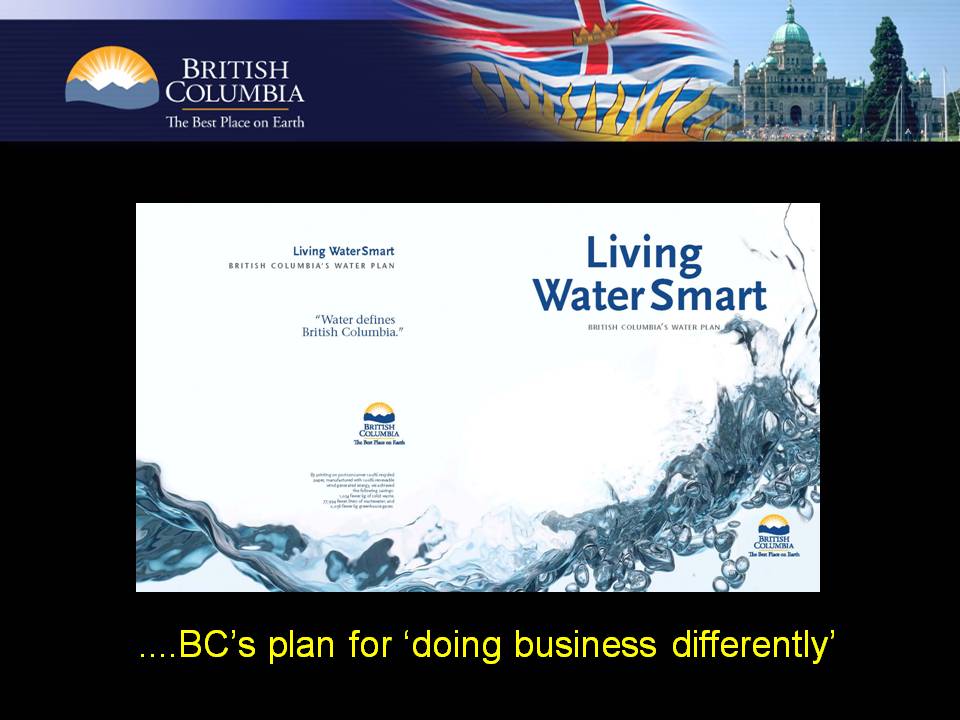2008 Cowichan Water Balance Forum: “The success of the Forum is demonstrated by a number of results,” wrote Jay Bradley, Chair, Vancouver Island Coordinating Team
Living Water Smart – Doing Business Differently in British Columbia
On October 17, 2008 the Cowichan Valley Regional District (CVRD) hosted a ‘by invitation only’ Water Balance Model Forum in collaboration with the Inter-Governmental Partnership.
The Forum was organized under the umbrella of CAVI – Convening for Action on Vancouver Island.
The Forum featured a roundtable sharing of case study experience related to achieving runoff-based performance targets.
The Cowichan Valley Water Balance Model Forum was part of the implementation program for Beyond the Guidebook: The New Business As Usual.
This initiative adds depth to Living Water Smart, the provincial government’s vision and plan to keep British Columbia’s water healthy and secure for the future.

Vancouver Island Coordinating Team (VICT)
Jay Bradley, Chair of the Vancouver Island Coordinating Team (VICT), a sub-group of the Inter-Governmental Partnership, represented the Province and  provided the Living Water Smart context for the Forum purpose and desired outcome.
provided the Living Water Smart context for the Forum purpose and desired outcome.
Initiated by three provincial Ministries in December 2006 to facilitate a consistent, science-based approach to rainwater management, VICT undertook an outreach program that involvedmeeting with local governments to generate dialogue and build bridges.
Report from the VICT Chair
The forum was delivered to a target audience comprised primarily of developers and consultants.To see how the Forum was structutred, click on the following link to download a copy of the Cowichan WBM Forum – Agenda.
“The success of the Forum is demonstrated by a number of results,” reports Jay Bradley. These are summarized as follows:
A FULL HOUSE!
We went from a list of 20 planned to over 50 actual attendees!!

BIG WHEELS!
The participation of prominent local developers and consultants (Michelle Mahavlich of Three Point Properties; Oleh Dubek of 1st Team Consulting Ltd; Dave Conway of Creative Engineering) who reported out on their experience of using the Water Balance Model to assess their development proposals (Bamberton; Artisan Village; Lane’s Landing)
ENTHUSIASM!
Everyone stayed until the end (punctually ended at 3:00); the question and answer period was notably abuzz with interest and interaction, focused on what water-centric planning is all about and what the Water Balance Model can do (as well as what the challenges are).
NETWORKING!
The session brought developers, consultants and local government together to learn and share, greet and meet. I noticed a lot of card-swapping and hand-shaking going on.
THE BIGGER PICTURE!
Practitioners came away with an understanding that the Province’s Living Water Smart plan provides further context for ‘Doing Business Differently,’ to create liveable communities and protect stream health.
PARADIGM-SHIFT!
The idea of setting easily-understood science-based runoff targets and seeing the results through the Water Balance Model went a long way to shifting mindsets away from the pipe-and-convey mode of thinking, to the concept that managing rainfall “where it falls” is not only in keeping with a design with nature approach, but also creates ‘green value.
‘FACTS OVER FEAR!
Because the Water Balance Model is a science-based tool it can be used early in the development planning process to provide informed decision-making. It won’t tell us what choices to make, but it will help guide choices by revealing options and their impacts.
ENLIGHTENMENT!
From the outset the tone was set for “give and take.” The forum was carried out on the principle of two-way communication, sharing and education.
“In the larger context, the forum is indicative of how far along our community of Vancouver Island practitioners has come,” concludes Jay Bradley.
“We are fostering a growing understanding of the fact that what goes on at a site, in terms of how rainwater is treated, is linked not only to stream and watershed health, but also to our social well-being and aesthetics of our communities.”
“Unlike the pipe-and-convey approach, the use of source control features is an investment in green value that brings returns for the developer and end-users of a site.”

PowerPoint Presentations
The 3-person teaching/facilitation team comprised Kim Stephens (Program Coordinator, Water Sustainability Action Plan), Jim Dumont (Water Balance Model Engineering Applications Authority) and Richard Boase (District of North Vancouver, and member of the Inter-Governmental Partnership Steering Committee). To view their PowerPoint presentations, click on the links below.
- Living Water Smart – Today’s Expectations are Tomorrow’s Standards
- An overview of where we are and how we got here
To view the presentation by Michelle Mahovlich and Oleh Dubek, click on the link to Bamberton Case Study.
The other two case study teams (Artisan Village and Lanes Landing) presented their findings verbally.
What is the Water Balance Model?
The new ‘Water Balance Model powered by QUALHYMO’ is unique, bridges engineering and planning, links development sites to the stream and watershed, and enables local governments to establish science-based runoff performance targets.
To Learn More:
Click on the following link to an article in the April 2008 issue of Runoff: Create Liveable Communities and Protect Stream Health: Water Balance Model powered by QUALHYMO integrates the site with the watershed and the stream.





